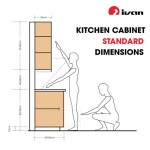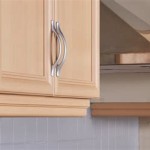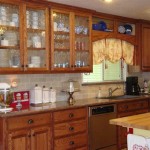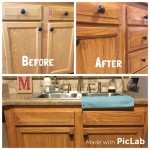Restoring Kitchen Cabinet Finish: Essential Aspects
Restoring the finish of kitchen cabinets is an essential aspect of maintaining the aesthetic and functionality of your kitchen. Over time, cabinet finishes can become dull, scratched, or damaged due to daily use, wear and tear, and exposure to heat and moisture. Restoring the finish involves repairing any damage, cleaning and preparing the surface, and applying a new protective coating. Here are the essential aspects to consider when restoring your kitchen cabinet finish.
Assessment and Preparation
The first step in restoring a kitchen cabinet finish is to assess the condition of the cabinets and identify any damage or imperfections. This includes inspecting for scratches, dents, chips, and peeling. Once the damage has been assessed, the surface must be properly cleaned and prepared to ensure that the new finish adheres properly. Cleaning involves removing dirt, grease, and any other contaminants using a suitable cleaner. Sanding may be necessary to smooth out uneven surfaces or to remove old paint or varnish.
Repairing Damage
If there is any significant damage to the cabinet, such as deep scratches or dents, it will need to be repaired before refinishing. This can be done using wood filler, epoxy, or other suitable materials. Once the damaged area has been repaired, sand it smooth to match the surrounding surface.
Choosing the Right Finish
When choosing a finish for your kitchen cabinets, there are several factors to consider, including the style of your kitchen, the durability of the finish, and the ease of application. Popular finishes include paint, varnish, lacquer, and wood stain. Paint and lacquer provide a durable, high-gloss finish, while varnish and wood stain offer a more natural look with varying degrees of durability.
Applying the Finish
The final step in restoring your kitchen cabinet finish is to apply the chosen finish. This can be done using a brush, roller, or spray gun. Be sure to follow the manufacturer's instructions carefully and apply multiple thin coats for the best results. Allow each coat to dry completely before sanding lightly and applying the next. Once the final coat has been applied, allow the finish to cure fully according to the manufacturer's recommendations.
Maintenance and Care
To maintain the beauty and longevity of your restored kitchen cabinet finish, it is important to clean and care for it properly. Regular cleaning with a mild detergent and water is sufficient for most finishes. Avoid using harsh chemicals or abrasive cleaners, as these can damage the finish. When necessary, touch up any minor scratches or damage using the same finish that was originally applied.

Cabinet Refinishing An 8 Step Guide For Pro Painters Ppc

How To Refinish Kitchen Cabinets N Hance

How To Re Cabinets Bob Vila S Blogs

Refinishing Kitchen Cabinets Modern Refacing Made Easy Wisewood

Cabinet Refinishing Guide
Refinishing Kitchen Cabinets A Beautiful Mess

How To Refinish Cabinets Like A Pro

Cabinet Refinishing N Hance

How To Refinish Wood Cabinets The Easy Way Love Remodeled

How To Refinish Kitchen Cabinets Diy
Related Posts








